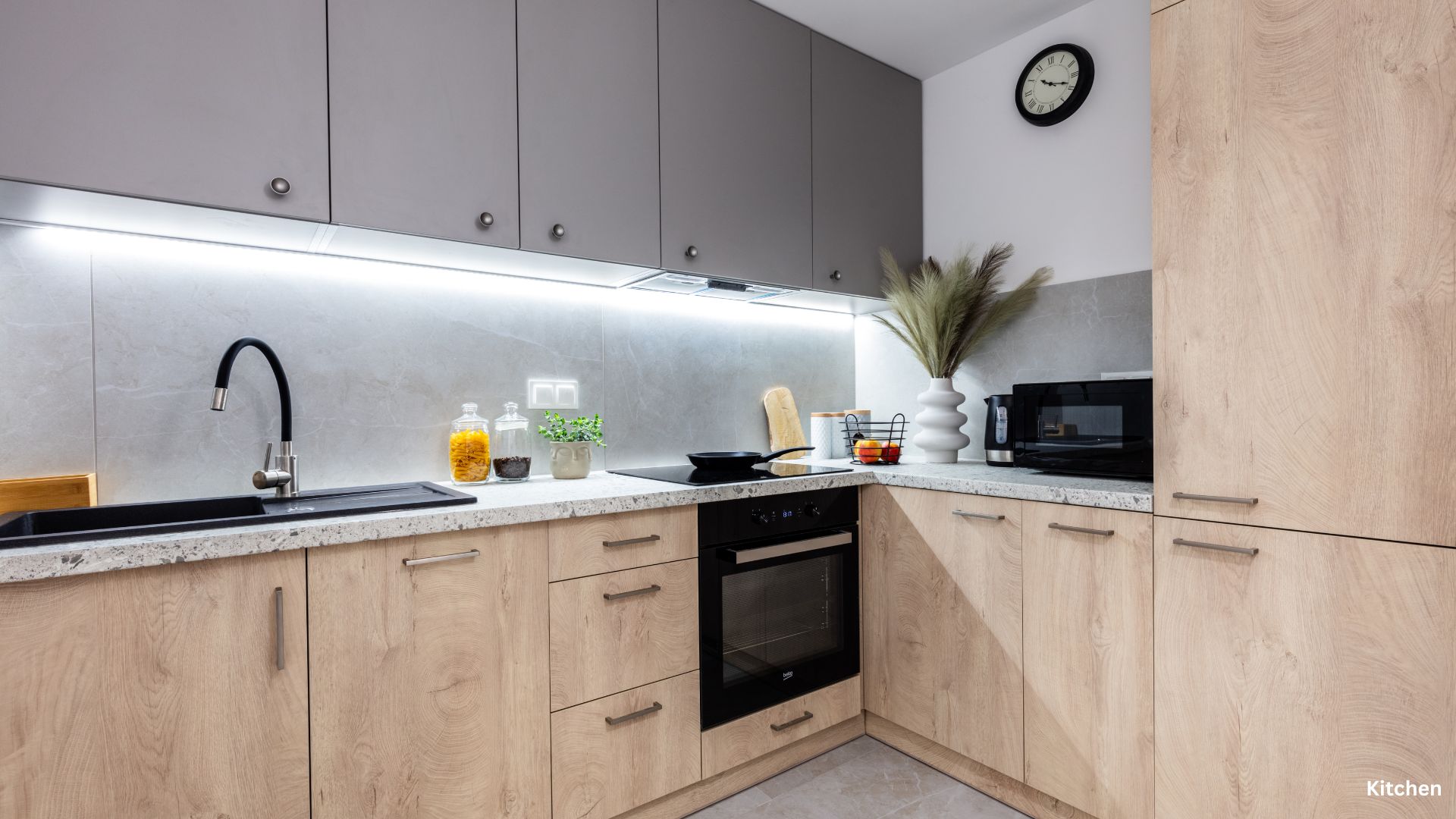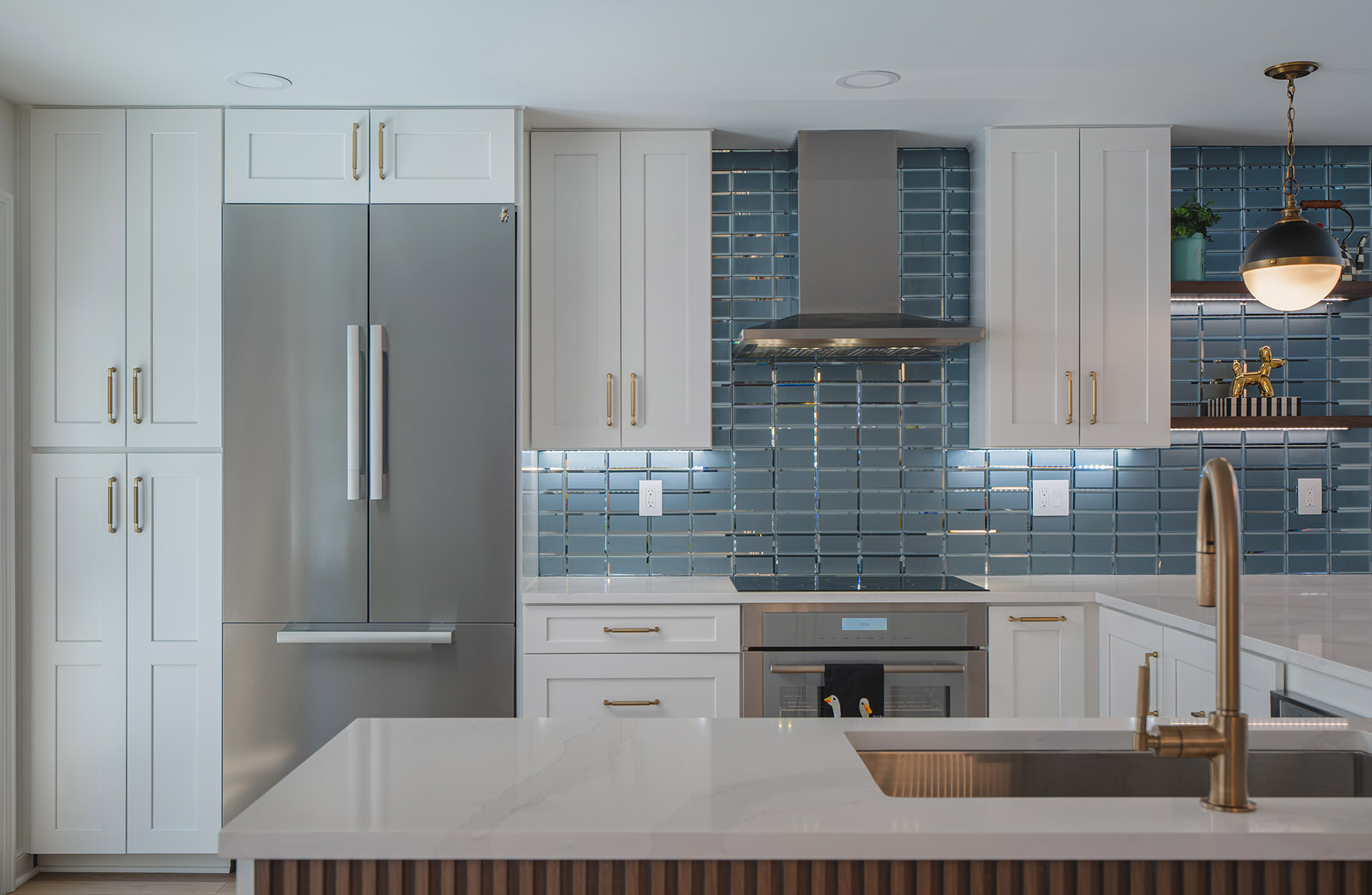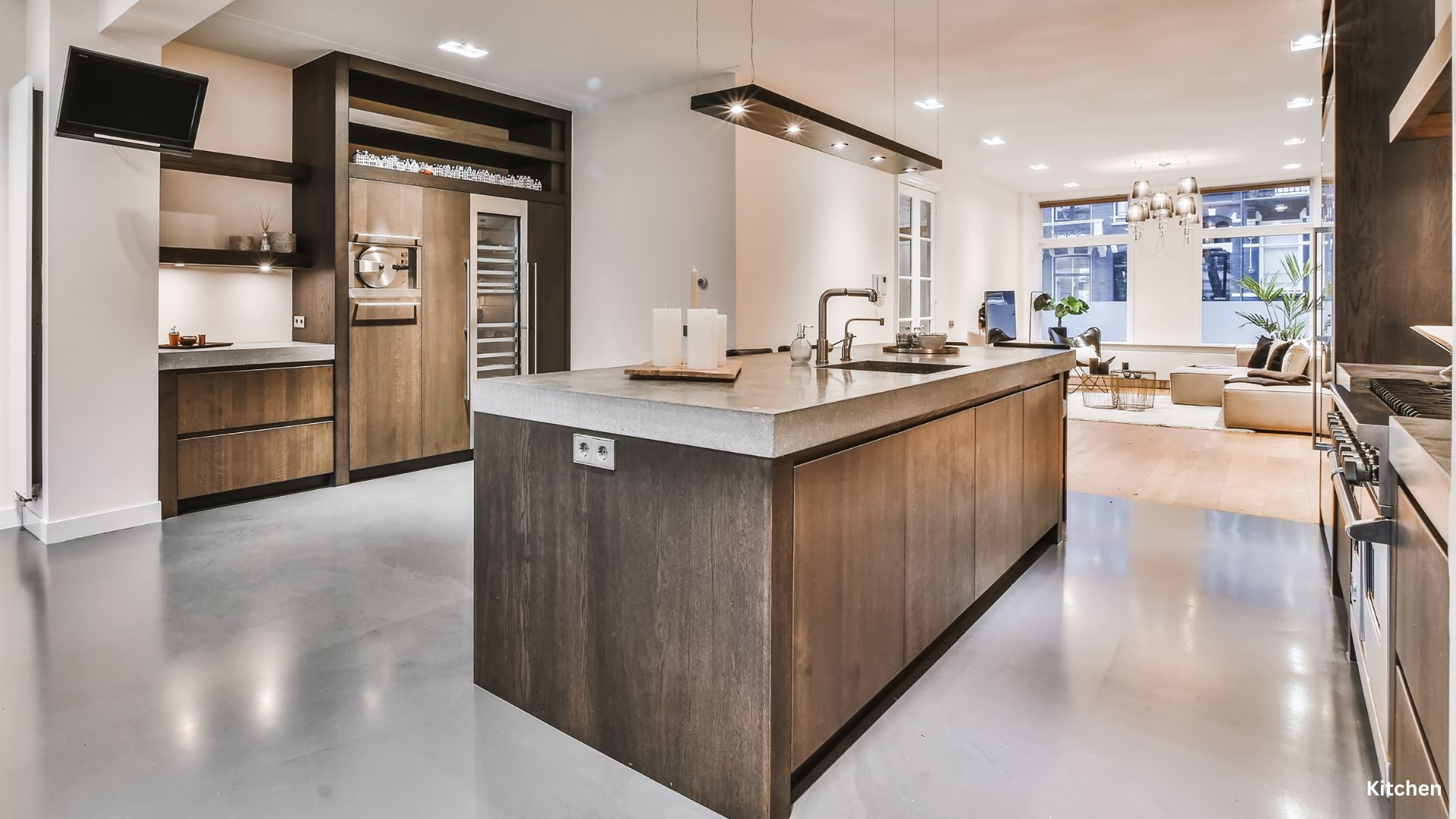When remodeling a kitchen, proper lighting is crucial not only for aesthetics but also for functionality. As a remodeling contractor, I’ve gathered some essential kitchen lighting tips to ensure your kitchen is well-lit, practical, and stylish.

Kitchen Lighting Tips
1. Layer Your Lighting
A well-lit kitchen should include a mix of ambient, task, and accent lighting. Ambient lighting provides overall illumination, task lighting focuses on specific work areas, and accent lighting highlights architectural features or decor. This layered approach creates a versatile and inviting atmosphere.
2. Position Task Lighting Correctly
Task lighting should illuminate work surfaces such as countertops, islands, and sinks. Install pendant lights above islands and sinks, but ensure they are at least 2 ½ feet above the surface to reduce glare and improve functionality. Under-cabinet LED strips are also great for illuminating countertops and other work areas.
3. Utilize Ambient Lighting
Ambient lighting, such as recessed ceiling lights or a central chandelier, should provide even illumination throughout the kitchen. For recessed lights, space them about half the height of your ceiling (e.g., 5 feet apart for a 10-foot ceiling) to avoid shadows and ensure uniform lighting.
4. Incorporate Accent Lighting
Accent lighting adds depth and dimension to your kitchen. Consider installing cove lights in ceiling ledges, puck lights inside cabinets, or LED strips along the toe kick of your base cabinets. These lights highlight decorative elements and create a cozy ambiance.
5. Choose the Right Bulbs
Select bulbs with the appropriate color temperature for different lighting types. Use cooler, neutral white bulbs (3500K to 4100K) for task and ambient lighting to ensure clarity and reduce eye strain. For accent lighting, warmer bulbs (2700K to 3000K) create a welcoming and comfortable atmosphere.
6. Take Advantage of Natural Light
Maximize natural light by incorporating large windows or skylights in your kitchen design. Natural light not only reduces the need for artificial lighting during the day but also enhances the overall brightness and mood of the space.
7. Implement Smart Lighting Solutions
Modern kitchens benefit from smart lighting systems that allow you to control the intensity and color of your lights. Install dimmer switches and smart bulbs to adjust the lighting based on your activities, whether you’re cooking, entertaining, or enjoying a quiet meal.
8. Don’t Forget Decorative Lighting
Decorative lighting, such as statement chandeliers or unique pendant lights, adds personality and style to your kitchen. Choose fixtures that complement your kitchen’s design and serve as focal points to elevate the overall look.
By following these kitchen lighting tips, you can create a beautifully lit space that is both functional and stylish. Proper lighting enhances the cooking experience, improves safety, and adds to the kitchen’s aesthetic appeal.

Common Questions About Kitchen Lighting
1. What are the different types of kitchen lighting?
Kitchen lighting can be divided into three main types: ambient, task, and accent lighting. Ambient lighting provides overall illumination for the kitchen and is usually achieved with ceiling-mounted fixtures like chandeliers or recessed lights. Task lighting focuses on specific work areas such as countertops, sinks, and stovetops, and includes options like under-cabinet lights and pendant lights. Accent lighting is used to highlight decorative elements and architectural features, often utilizing LED strips or puck lights.
2. How should I position kitchen lighting fixtures?
When positioning kitchen lighting, consider the function of each light source. Ambient lights should be evenly spaced to avoid shadows, with recessed lights typically spaced half the height of the ceiling. Task lights should be placed directly above work areas, such as pendants above an island or under-cabinet lights above countertops. Accent lights should be positioned to highlight features like cabinetry or decorative elements.

3. What kind of bulbs are best for kitchen lighting?
The best bulbs for kitchen lighting vary by the type of lighting. For task and ambient lighting, use bulbs with a color temperature of 3500K to 4100K, which provide neutral, true white light. For accent lighting, warmer bulbs (2700K to 3000K) create a cozy and inviting atmosphere. LED bulbs are recommended for their energy efficiency and longevity.
4. How can I incorporate natural light into my kitchen?
Incorporating natural light into your kitchen can be achieved by installing large windows, skylights, or glass doors. Positioning work areas near these natural light sources can reduce the need for artificial lighting during the day. Using light, reflective colors for walls and countertops can also help maximize the effect of natural light.

5. What are some modern trends in kitchen lighting?
Modern kitchen lighting trends include the use of LED strips instead of recessed cans to reduce ceiling clutter and improve light quality. Smart lighting systems that allow for adjustable intensity and color are becoming popular, as well as decorative fixtures like oversized pendant lights and chandeliers that serve as focal points. Layered lighting, combining ambient, task, and accent lights, is also a key trend for creating versatile and dynamic kitchen spaces.
